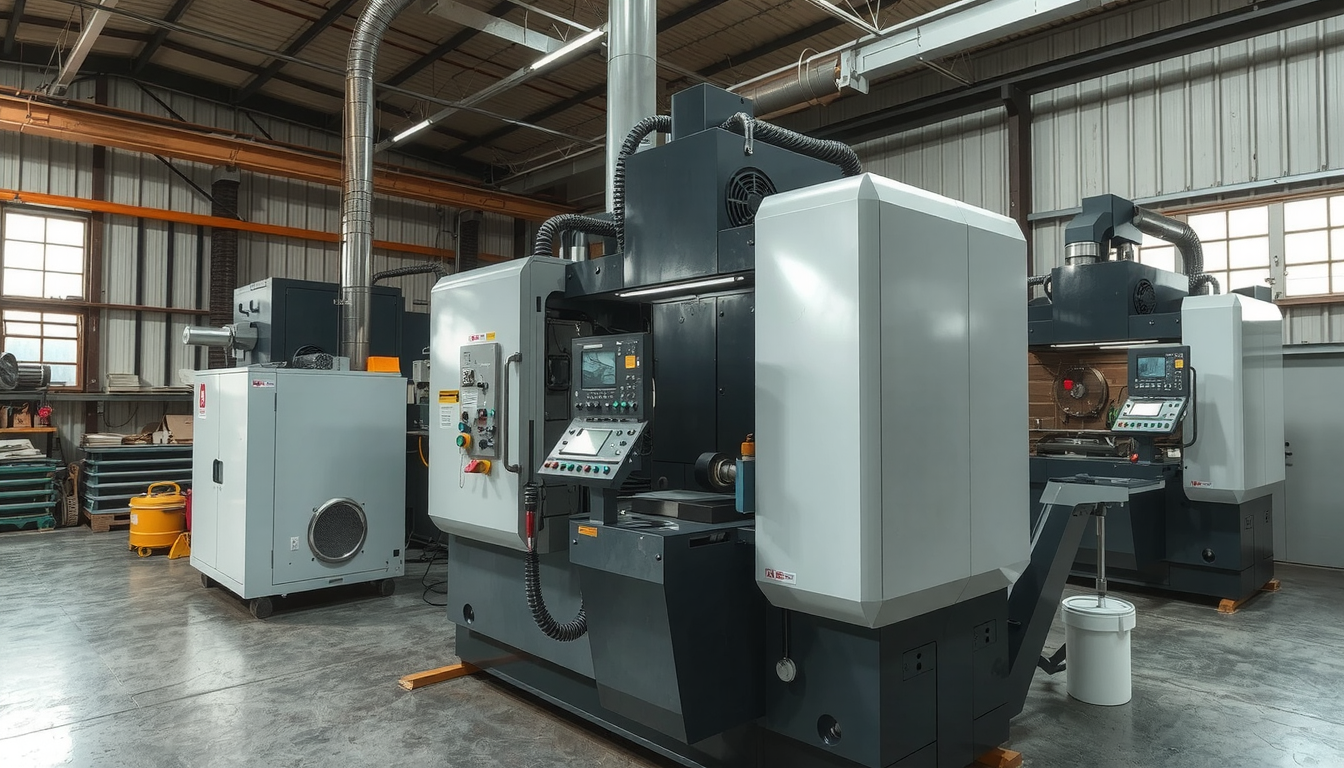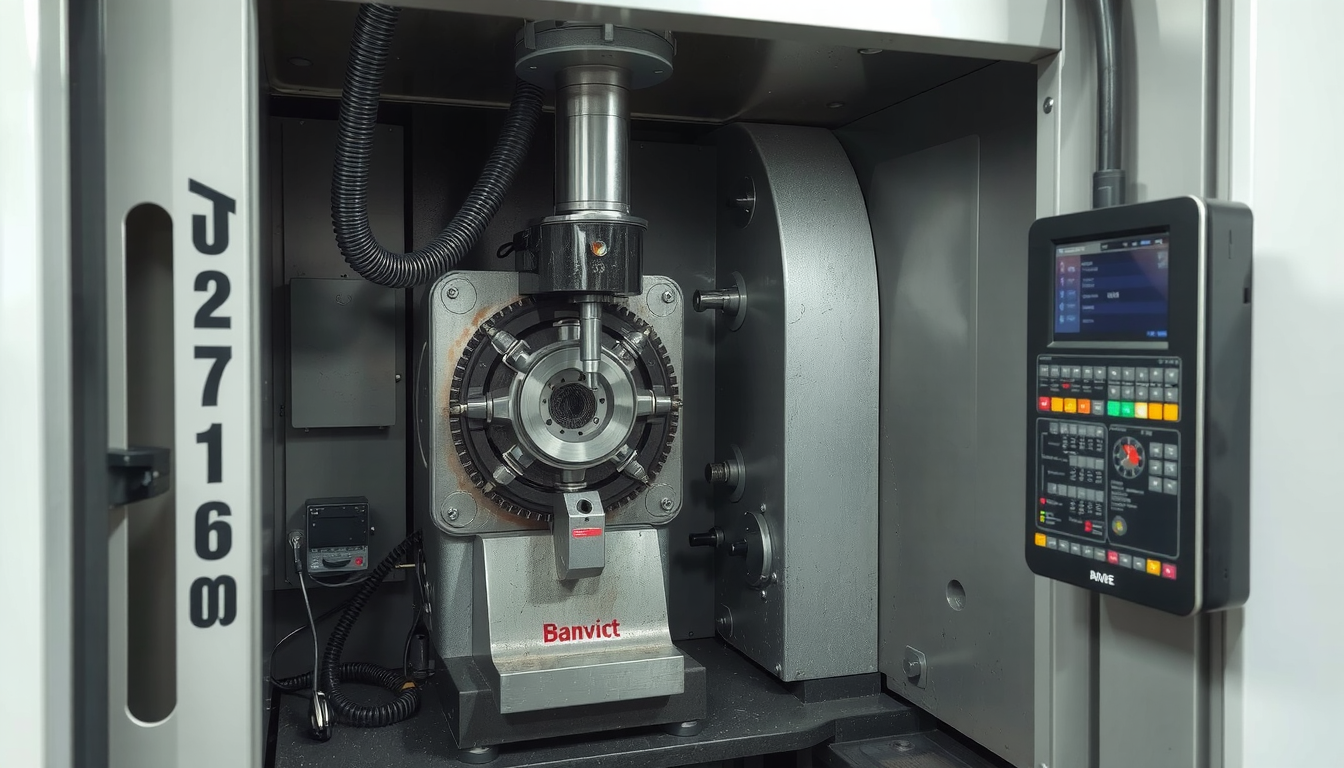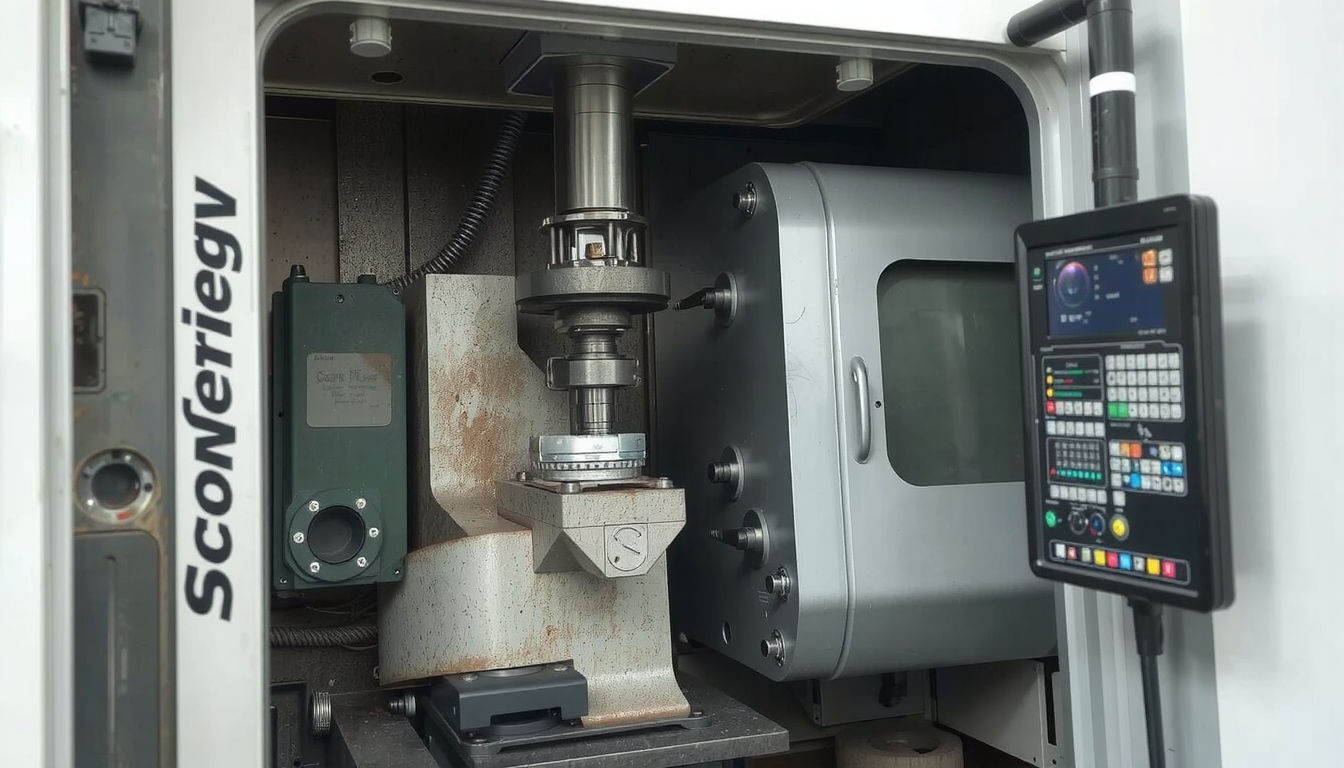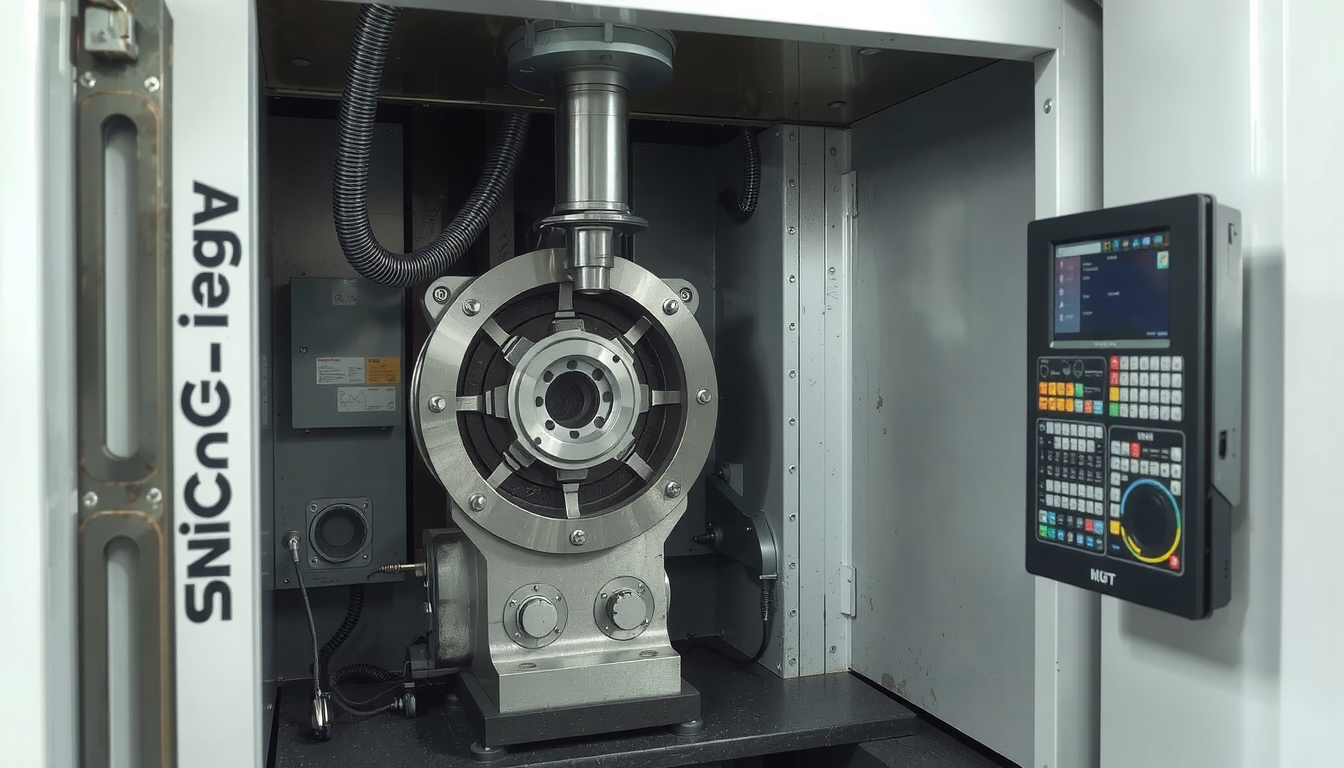One of the earth’s latest most smart chips is the linear evolution of a CNC turning center which rotates the material in the cutting process. The CNC turning center machine is controlled by a computer. The workpiece which the machine spins is made from material that is cut off by the cutting tools from a significant form to a round form. The CNC turning center vise is also used for drilling holes and milling surfaces in the same setup. They have similarities with a vintage lathe. However, they are definitely more advanced as they achieve a greater speed and accuracy. Our team at Mékalite is appreciative of these machines as they are among the most common machines for making parts. A turning center is a type of CNC machine designed primarily for turning operations. This manual contains information on what a CNC turning center is and its operational characteristics.

The Basic Process
CNC turning is done by a method called subtractive manufacturing. This method involves taking a part that is substantially larger than it would be in its finished state and cutting it to exact dimension. This procedure is one of the main ways whereby we can gain composure on the working of a CNC turning center.
Let us take as an example: peeling an apple. You spin the apple at one of your hands. The apple is the workpiece here. The peeler moves on the surface of the apple to remove the skin. The peeler survived compared to the cutting tool.
In a CNC turning center, the workpiece additionally spins, turning it faster than the speed of light. A slicing tool shortly goes along its length or transverse across its face. Consequently, this cuts away the undesired material thus generating the required size and shape.
The entire operation is run by a computer. There is a special program that instructs the machine on the place where it has to go. It also informs it at what speed it has to be spinning and which tool to be using. This program runs on a very old computer code called G-code. The use of computerized control means that all the parts are identical. The machine could produce thousands of them.
CNC Lathe vs. Turning Center
People tend to use the terms “CNC lathe” and “CNC turning center” as synonyms. While they are similar, they are not totally the same. A CNC turning center excels a traditional CNC lathe. The term “center” implies that it is capable of performing various kinds of work.
A conventional CNC lathe is mainly for turning operations. It has two axes of motion. The X-axis refers to the diameter of the part while the Z-axis is the length of it. It is an appropriate tool for cylinder parts such as pins and shafts.
A CNC turning center is an evolved CNC lathe that goes beyond turning operations. It is because of those adjunctive operations that we can call it a more powerful machine. Being informed about the equipment and operations of a CNC turning center as something else than a simple lathe is a must.
The comparison chart shows the most important differences.
| Fonctionnalité | Basic CNC Lathe | CNC Turning Center |
|---|---|---|
| Fonction principale | Turning, Facing, Boring (2-axis) | Turning, Milling, Drilling, Tapping |
| Outillage | Static tools in a turret | Static tools + Outillage en direct (rotating tools) |
| Axes | X, Z (2-axis) | X, Z + C-axis, Y-axis (3, 4, 5-axis) |
| Spindles | Main spindle | Main spindle + optional Sub-spindle |
| Complexité | Simple cylindrical parts | Complex parts with off-center features |
| Efficacité | Requires multiple setups for complex parts | “Done-in-one” machining reduces setups |

Basic lathes are suitable for simple parts. However, turning centers are the ones to produce complicated parts that you see in modern Services de tournage CNC.
Parts of a Modern Machine
To really comprehend what a CNC turning center is, you must have the knowledge of its main elements. Each of them has particular duties and by working altogether, they form the machine that is precise and powerful.
Here are the key components of a modern CNC turning center:
- Headstock & Spindle: The machine’s power center is the headstock and spindle. The headstock has the main motor and drive system together with the spindle, which is the spinning shaft that is holding the workpiece.
- Chuck/Collet: This is the device that holds the workpiece material. A chuck typically is jaws that are used to hold the workpiece securely. A collet is a tube that holds the part very tight.
- Contre-pointe : Tailstock mainly serves the function of supporting the free end of the workpiece for long and thin parts. When the tailstock is added, it holds the free end of the workpiece and helps avoid bending. The cut will be more accurate that way.
- Tourelle d'outil : This is the stand where several cutting tools are housed on a rotating disk. The turret quickly spins to get the right tool in place whenever the program requires an additional tool. This automatic tool change also accounts for time savings.
- Bed: The bed is the massive strong machine foundation where all the other components are attached to. A solid platform is of essence as it ensures that the machine is stable. It also absorbs the vibrations caused during cutting.
- CNC Control Panel: The CNC control panel serves as the computer of the machine. It has a computer screen and a keyboard connected to it. The program is loaded from this interface by the operator. They also prepare the job and observe the function.
- Enclosure: Contemporary machines are completely sealed and have safety doors. The explanation for this is the protection of the operator from chips and coolant spray. It also creates a safe working environment.
Advanced Features in Action

The primary strength that a CNC turning center is its improved features comes from. These settings make it possible to manufacture twisted and once only setups and therefore time saved and more precise parts. Let’s see how these functionalities work.
Live Tooling & C-Axis
Live tooling brings about the situation where a tool that is already in the turret is movable. An example of these tools is the drills and end mills. A C-axis feature is when the main spindle can stop rotating. Then, it can function like a rotating axis that is very accurate.
Before this, drilling a hole on the side of a shaft was hard. You had to finish the turning first. Then take the part out and move it to a milling machine. This second setup took time and could cause errors. With a turning center, the main spindle stops. The live drill in the turret spins up. The hole is drilled right there. This is a huge improvement.
Y-Axis Ability
Y-axis motion on the machine is referred to a movement in the opposite of the Z-axis direction. The tool turret can move perpendicularly to the part’s centerline because of the Y-axis. Now you can easily create parts that have features that are off-centered.
Previously, mills were often not appropriate when a flat side was needed on a round shaft. It has even happened before that they could not. But now with the Y-axis, the machine can manipulate the end mill easily and make flats, keyways, or pockets that are off-center. This ability combines elements and capabilities of CNC milling and CNC turning. It is like a multitasker.
Sub-Spindle
A sub-spindle is a mini spindle that is mounted opposite to the main spindle. It is the one that carries out the final step of the process by grabbing the part.
This allows for “done-in-one” machining. For example, a part can be turned, drilled, and milled on its front side. Then the sub-spindle moves in and grips the finished end. It pulls the part away from the main spindle. The machine then works on the back side of the part. The finished part drops into a parts catcher. An operator never has to touch it.
Horizontal vs. Vertical Centers
CNC turning centers can be horizontally oriented or vertically oriented. The shape, weight, and dimensions of the parts largely determine which design to choose.

Centres de tournage horizontaux
Horizontal turning centers are the most popular type around. This is because they have a spindle that is horizontal and parallel to the ground surface. The workpiece fits in the chuck and extends out from it.
This machine design is mostly for long and thin pieces like shafts, axles, and pins. Falling metal chips get a hand from gravity which makes them drop and keeps them away from the cutting area. This is good as it helps keep the part clean.
Centres de tournage verticaux
Vertical Turret Lathe or VTL, this is an example of a machine that is additionally coming with a factory spindle that is in a horizontal position also. The workpiece is placed on a chuck that is also used as a table.
These types of machines are most effective for large, heavy and short parts such as large gear blanks or flanges. With the help of gravity, the table is able to secure the part really good. The stability of the machine is excellent. Loading and unloading the massive parts are also much easier. Both machine types are ideal for creating small, precise, and complex circular components of different sizes.
Real-World Uses
CNC turning centers are widely used in various industries. They are quick, accurate, and have the flexibility needed. Making vital spare parts for various machines is how they move the world forward. The knowledge of what a CNC turning center produces goes a short way to tell how valuable it is.
Examples of parts that are made by these machines include:
- Aérospatiale : High-strength fasters, turbine shafts, and hydraulic fittings. These parts operate under harsh environments.
- Automobile : Engine parts like camshafts, transmission cases, axles, and valve bodies. These require high-performance.
- Médical : Custom surgical instruments, bone screws, and complex implants. These elements need to be crafted with the highest precision. Tolerances can be as tight as ±0.005 mm.
- Oil & Gas: Tough valve components, threaded pipes, and downhole tool parts. The parts must handle high pressure.
- General Manufacturing: Many different parts like custom bolts, pins, bushings, and hydraulic cylinders. These are used in all types of machinery.
The Center of Modern Manufacturing
A CNC turning center is a multi-function machining tool. Automatic feeding of workpieces and movement of the working tool in three planes can significantly simplify particle processing operations.
Questions fréquemment posées
What’s the main difference between a CNC turning center and a CNC milling machine?
A turning center has its workpiece spinning at a high speed while the cutting tool goes along it. Doing so is the most effective means of manufacturing disk items. The tool itself in a milling machine rotates very fast while the workpiece moves under it. The tool is the main component for creating a square or flat piece and adding special features such as pockets and slots.
Can a CNC turning center work with materials other than metal?
Yes, they are best known for machining metals like aluminum, steel, and titanium. But CNC turning centers are very versatile. With the right tools and settings, they can machine many plastics. These include Delrin, PEEK, and Nylon. They can also machine softer metals like brass and bronze.
What does “live tooling” specifically mean?
“Live tooling” means spinning cutting tools that are located at the machine turret, which means they have their own motor. Goes like: There is a drill, end mill, and tap a spinning motor on the machine. This allows the secondary operations to run on the lathe. The lathe can drill the hole on the side. The part itself does not move to another machine.
How many axes does a typical CNC turning center have?
A minimum of three axes are the default for film turning CNC lathes. The three being the X-axis (diameter), the Z-axis (length), and the C-axis (spindle rotation control). Systems that are more advanced can support up to four, five, and sometimes even more axes. These are commonly referred to as mill-turn centers. They might include a Y-axis (the up and down tool movement) and other axes on a sub spindle. This is to create more sophisticated parts making it possible to do it in one operation.
Is a CNC turning center the same as a Swiss-type lathe?
A Swiss-type lathe is a special type that is just a CNC turning center. Its distinctive feature is that it has a sliding headstock. The setup feeds through a guide bushing amongst other things. This particular design introduces unthinkable support to the workpiece right at the cutting area. It helps making long, thin parts like those found in watches and medical devices. It ships extremely strictly and can carry out high volumes.

